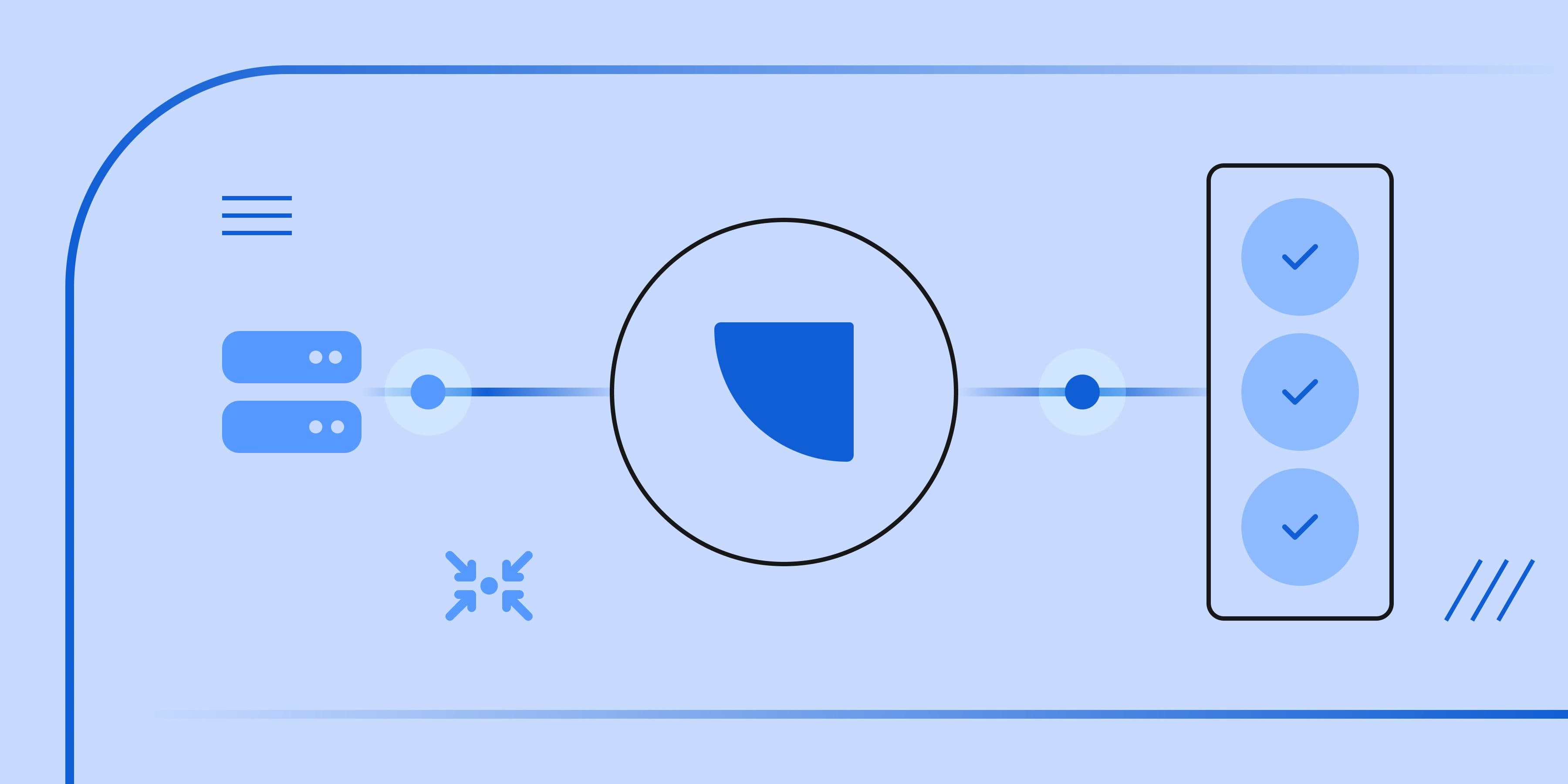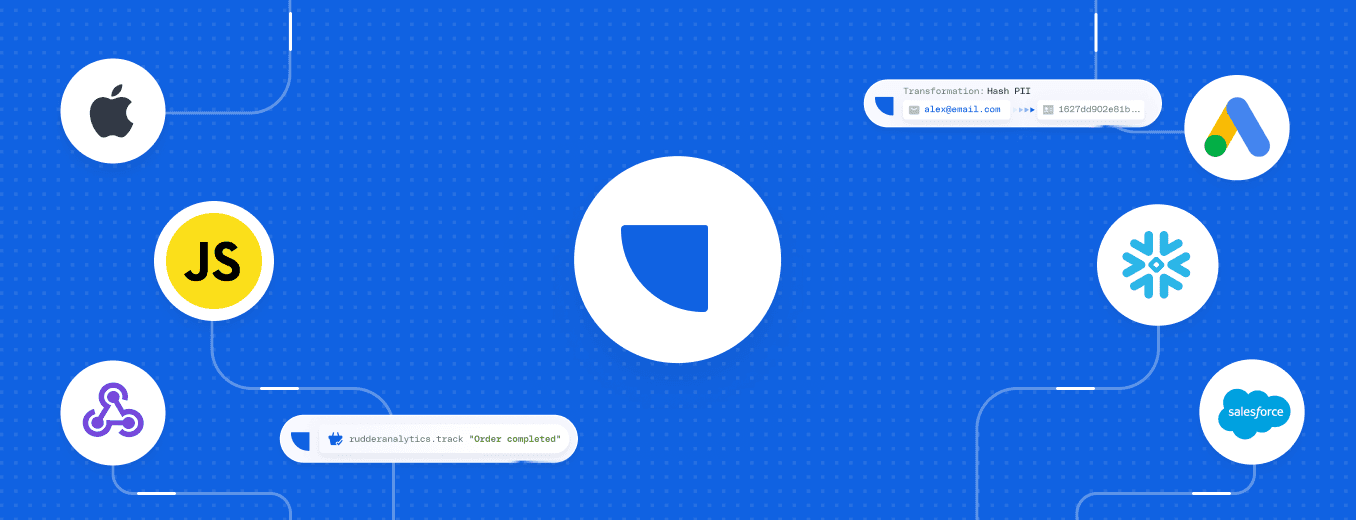Event Streaming: What It Is, How It Works, and Why You Should Use It

Event streaming allows businesses to efficiently collect and process large amounts of data in real time. It is a technique that captures and processes data as it is generated, enabling businesses to analyze data in real time and react to changes as quickly as possible.
In this article, we’ll define event streaming, explain how it works, and explore its benefits and use cases.
What is event streaming?
An event stream is a specific data flow technique. To fully understand it, let’s examine its individual parts.
Events
In data engineering, an event is any change to a data state that happens at a specific point in time. The range of possible events is enormous. Some examples are:
- A user login
- A website page view
- An IOT device measurement
- An online form submission
- A data upload
- A payment transaction
The key defining characteristics of events are that they happen at a specific time and can be recorded, often with a timestamp that increases the accuracy of tracking and processing.
Streams
Most people understand streaming as a method for accessing media content in real time. However, a more general definition of streaming is a continuous flow of data points from multiple sources, such as individual devices or sensors, to an end destination.
For an end user consuming media content, the destination might be a home computer or smartphone. In a business context, it could be a database, data lake, or business tool for data analysis.
Event streams
With this information, we can build a definition of event streaming as a continuous flow of time-stamped actions.
Event streaming enables you to access real-time data. Unlike traditional batch processing, where data is collected in batches and processed later, the real-time nature of event streaming enables immediate processing and analysis of data as it is generated. This technique is ideal for use cases like processing customer orders, responding to critical sensor alerts, or tracking user interactions.
How does event streaming work?
Event streaming architecture has two key elements: data storage and data processing.
The storage function captures event data as it is generated and saves each action with a timestamp. Thanks to the continuous nature of event streaming, these data points can be processed in real time as they arrive at downstream tools.
Data processing methods vary based on specific use cases. Common approaches include utilizing analytics platforms to derive insights or implementing automated systems that generate notifications based on data inputs. The chosen method depends on the desired outcomes and the nature of the data being handled.
In short, an event tracking platform’s data collection and integration capabilities streamline how business information is processed.
How can event streaming benefit your business?
There are several ways that event stream processing can provide a competitive edge for businesses. Here are a few of the biggest advantages:
Real-time analysis
Event streaming enables real-time data analysis, allowing systems to respond instantly to events. This has practical applications across industries. In finance, traders react to emerging market trends. For technology, engineers prevent production issues from escalating. In e-commerce, customers receive immediate transaction confirmations. Real-time analysis helps organizations make quick, informed decisions in fast-paced environments.
Decoupling and independence
Event streaming uses an intermediary service (or broker) to receive, categorize, and make available a huge number of events from different sources. Data analysis or automation systems can then draw information from this intermediary service as needed.
Because systems using the events don't need to directly communicate with the systems producing them, there's no need for them to speak the same language (so to speak). Assuming the event streaming service can speak every language, this allows disparate, decoupled systems to collaborate effectively.
This also means that different teams (likely using different tools) can all make good use of event data. Systems designed to only report events once can create disagreements over who should receive the data, with the recipient then being chased to share it. An event streaming service that collects event data and stores it to be accessed at any time (and as many times as needed) opens up more avenues for analysis and automation.
Reliability and agility
Having a robust event streaming system in place delivers a superior level of reliability by making event tracking a priority. Many conventional software systems treat event tracking as a secondary concern and can lose event records due to glitches or bouts of downtime.
Event streaming services are built to gather and preserve as much device data as they can, no matter what happens. When each unique event is only processed once, a malfunctioning event reporting system won’t spool out ten identical event entries and cause data duplication.
Additionally, event streaming in real time empowers users to spot issues and reach conclusions far faster than they'd be able to otherwise. A minor system failure can be noticed and addressed within minutes rather than hours, preventing it from snowballing into a bigger problem.
Exploring event streaming use cases
You can find even streaming examples in nearly every industry. We’ve chosen a few fields where it is commonly used for everyday operations to explore its efficiency in more depth.
Finance
Event stream processing is often used in stock price tracking. This is because markets move quickly and continuously, generating a huge amount of data that needs to be analyzed.
An event stream can capture this data for analysis in real time, helping to detect unusual patterns as they emerge. These patterns can then be used to improve trading strategies or detect potentially fraudulent activities.
Security
Modern business software solutions generate vast amounts of real-time data from both internal and external systems, which can obscure threats and introduce security vulnerabilities.
Event stream processing can improve company security by detecting anomalies and isolating suspicious data in real time, allowing for immediate responses to potential threats. Sensitive information can be protected through advanced access controls and data isolation, while other data can flow through the system as usual. Additionally, encryption algorithms can secure data at rest and in transit, ensuring comprehensive protection across the entire data lifecycle.
E-commerce
In e-commerce, event stream processing can significantly enhance the customer experience by analyzing user behavior and preferences in real time, enabling businesses to deliver personalized offers and content that resonate with individual customers. This approach helps target customers more effectively and boosts engagement.
Event stream processing can also enhance platform integration by enabling seamless data flow between various systems, improving operational efficiency. For instance, integrating real-time data streams from customer interactions across platforms, such as linking CRM data with marketing automation tools, allows for continuous updates and refinements to customer profiles. This enriched data can then be used to tailor marketing strategies and optimize customer engagement efforts, similar to how B2B companies use lead enrichment to refine their outreach.
Logistics
Effective logistics rely on good supply chain management. Real-time event streaming allows the processes involved in the smooth running of a supply chain to be optimized.
Using event streaming simplifies the identification of bottlenecks that could hold up deliveries. Companies can also spot other inefficiencies, such as delays or anomalies, in the supply chain in real time. This allows them to make adjustments proactively and prevent larger problems from developing.
Dive into how to use RudderStack Event Stream
RudderStack Event Stream offers an event streaming platform that provides organizations with direct management of their first-party data. It enables you to stream data directly to your data warehouse, data lake, and over 200 business tools in real time.
Track user journeys across your website and send the data to your entire tech stack, while remaining fully compliant with cookieless tracking and PII masking rules. You can track usage across both web and mobile platforms, and send events to product analytics and mobile engagement tools using a single SDK.
See RudderStack Profiles in action
If you would like to find out more about how RudderStack can help turn your customer data into a competitive advantage, request a demo today.Recent Posts
 Event Streaming: What It Is, How It Works, and Why You Should Use It
Event Streaming: What It Is, How It Works, and Why You Should Use It Understanding data maturity: A practical guide for modern data teams
Understanding data maturity: A practical guide for modern data teams Understanding event data: The foundation of your customer journey
Understanding event data: The foundation of your customer journey